ThinkPad notebooks are 19 years old!
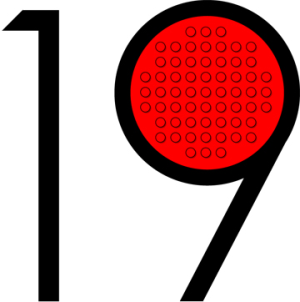 On October 5, ThinkPad notebooks turned 19 years old. It was on this day in 1992 that the IBM ThinkPad 700C laptop was released - the top model with a 25-megahertz 486th processor and a color TFT-display. Laptops at that time were advertised in print media, there was not yet an official website for the company where drivers and instructions could be downloaded, and the main operating system was the fifth MS-DOS.
On October 5, ThinkPad notebooks turned 19 years old. It was on this day in 1992 that the IBM ThinkPad 700C laptop was released - the top model with a 25-megahertz 486th processor and a color TFT-display. Laptops at that time were advertised in print media, there was not yet an official website for the company where drivers and instructions could be downloaded, and the main operating system was the fifth MS-DOS.Since then, much has changed and a similar 10-inch display can now be found in the 750-gram ThinkPad Tablet. The weight, price and performance of mobile computers have drastically changed. But something remained unchanged. The ThinkPad series is made by the same people in the same research lab. The very first ThinkPad had an incredibly comfortable keyboard, the same red TrackPoint, which perfectly replaced a mouse and a touchpad not yet invented in field conditions, and a lot of possibilities for upgrading. This article is a photo of the first ThinkPad and some other “archival” models.

')
To begin with, according to modern standards, the ThinkPad 700C is, of course, an incredible brick. As, in principle, all laptops of the early 90s. He weighed 3.5 kilograms with a thickness of 5.6 centimeters. Really thin models began to appear at the very end of the 90s. But on this photo you can clearly see that in 700C some features appeared in the modern notebooks of the series today:
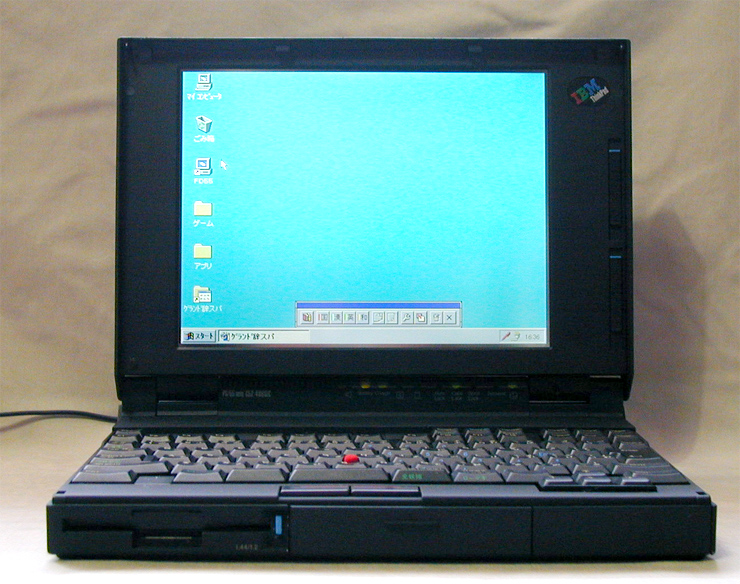
Of the main ones, the display lid “reinforced” along the contour can be noted - these thickenings impart additional structural strength, protecting the display. About the company TrackPoint, I have already mentioned. On the front panel there are three modular compartments: for the drive (then of course for floppy disks), the battery and the hard disk. Even then, the hard drive in the laptop was hidden under a separate cover and its replacement did not require disassembling the entire laptop, as in the current models. Well, a number of indicators under the screen also looks familiar, with duplicate LEDs on the top cover.
Specifications of the model were as follows:
Processor : 486 SLC 25 MHz with the possibility of an upgrade to the 50 MHz version and installation of the Intel 387 co-processor
RAM : 4 megabytes, expandable up to 16 megabytes with two modules of eight
Hard Drive : 120 megabytes with upgradeable to 360 megabytes
Screen : 10.4-inch TFT with a resolution of 640x480 and support for 256 colors. Contrast ratio - 100: 1
Drive for floppy disks
Battery life - from 2 to 4 hours
Price : $ 4350
The cost is probably the most impressive on this list. Taking into account inflation, in modern dollars the price tag is even higher - 6670 dollars. It should be noted that this model cost so much by right: in more accessible laptops monochrome or extremely slow colored DSTN-matrices were used, often there was no hard disk and so on. In the same year, IBM introduced laptops with a price tag of $ 1,400.
Developed a laptop in Japan, in a specially created research center. This choice was due to the fact that it was in this country at that time that the most complete experience in the development and production of mobile computers was accumulated. Until today, this unit has reached almost unchanged and is now headed by Arimas Naito, who was directly involved in the development of the very first ThinkPad.
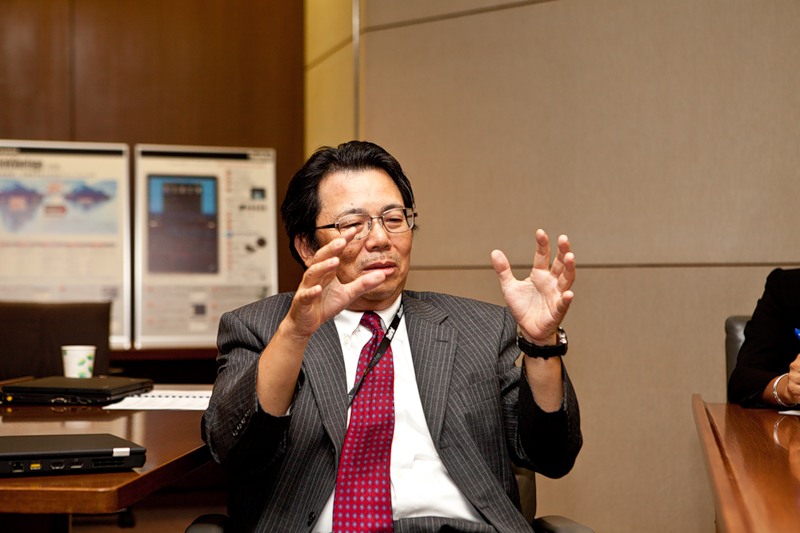
And in one of the corridors of the laboratory, you can look at other historical models. For example, the ultra-compact ThinkPad 240X, the progenitor of the modern X-series:

This laptop was released in 2000, eight years after 700C. With a similar screen size (10 inches), it weighed only 1.35 kilograms and was equipped with Pentium III processors with a frequency of up to 500 megahertz. ThinkPad X220 with a Core i7 dual-core processor and a 12.5-inch screen now has a similar weight. Feel the difference :)
The trackpoint appeared in the very first ThinkPad, but was not present in all models. In the photo - an experimental laptop with a trackball.

And, perhaps, the most exotic model - a laptop with a compact keyboard, built-in notebook.

The ThinkPad TransNote was released in 2001, equipped with a 600 MHz Pentium III processor, a 10-gigabyte hard drive and a touchscreen display. A complete pen could be used to keep notes on paper, after which these records could also be digitized.
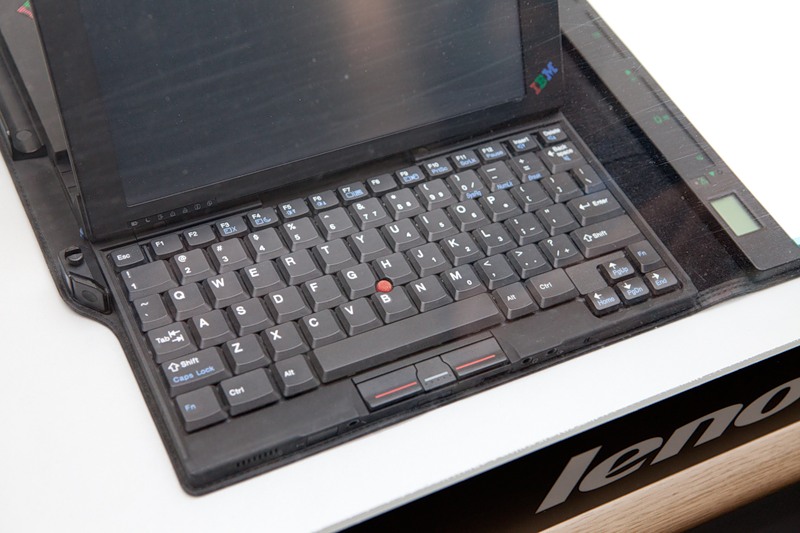
And finally, a couple of more typical models of the late 90s:
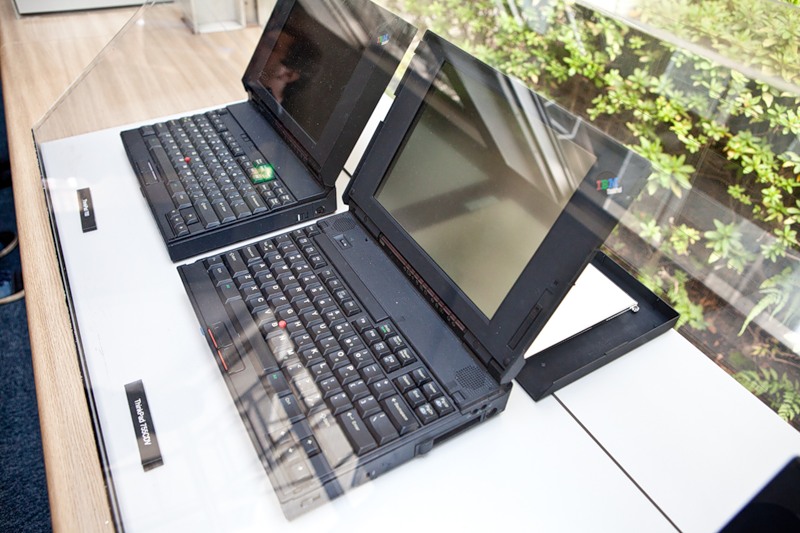
Are traditions really important in an industry that has changed almost completely in 20 years? We think so. ThinkPad laptops are constantly changing. In the six years that have passed since the sale of the production of IBM personal computers to Lenovo, almost everything has changed in mobile computers. But the most important thing was to keep: ThinkPad is still being developed by a team of engineers in Japan, and they always focus on technology, reliability and usability.
Source: https://habr.com/ru/post/129919/
All Articles